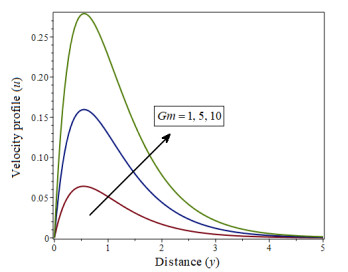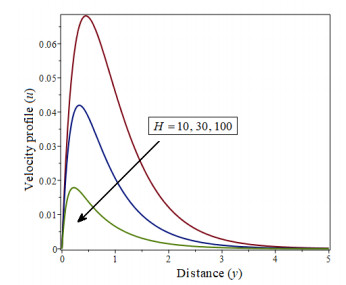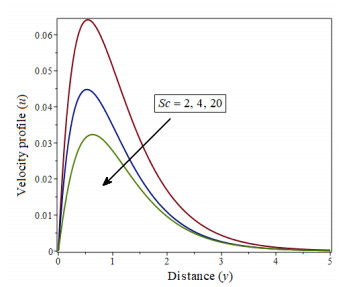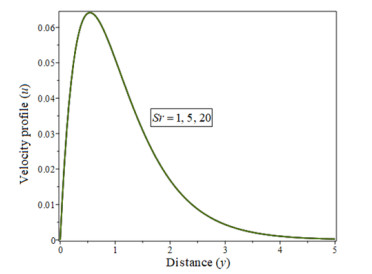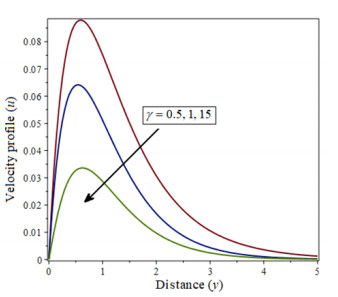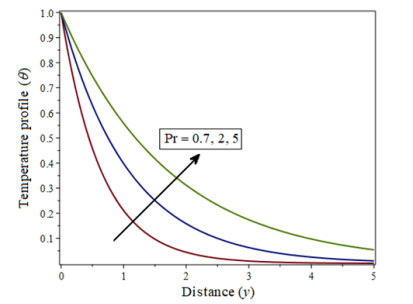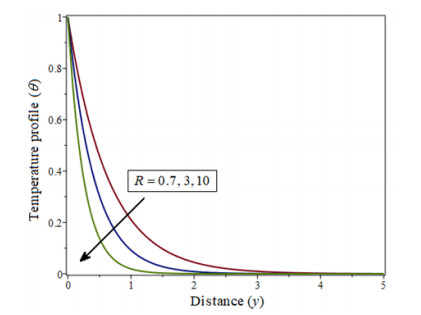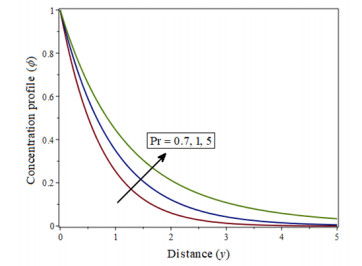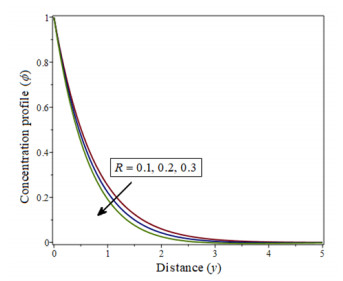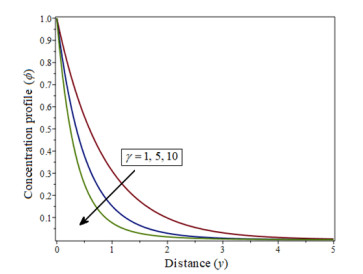|
[1]
|
R. Khalil, M. Al Horani, A. Yousef, M. Sababheh, A new definition of fractional derivative, J. Comput. Appl. Math., 264 (2014), 65–70. http://dx.doi.org/10.1016/j.cam.2014.01.002 doi: 10.1016/j.cam.2014.01.002

|
|
[2]
|
R. Mabel Lizzy, K. Balachandran, J. Trujillo, Controllability of nonlinear stochastic fractional neutral systems with multiple time varying delays in control, Chaos Soliton. Fract., 102 (2017), 162–167. http://dx.doi.org/10.1016/j.chaos.2017.04.024 doi: 10.1016/j.chaos.2017.04.024

|
|
[3]
|
K. Diethelm, The analysis of fractional differential equations, Berlin: Springer, 2010. http://dx.doi.org/10.1007/978-3-642-14574-2
|
|
[4]
|
H. Yasmin A. Alderremy, R. Shah, A. Hamid Ganie, S. Aly, Iterative solution of the fractional Wu-Zhang equation under Caputo derivative operator, Front. Phys., 12 (2024), 1333990. http://dx.doi.org/10.3389/fphy.2024.1333990 doi: 10.3389/fphy.2024.1333990

|
|
[5]
|
M. Kbiri Alaoui, K. Nonlaopon, A. Zidan, A. Khan, R. Shah, Analytical investigation of fractional-order Cahn-Hilliard and gardner equations using two novel techniques, Mathematics, 10 (2022), 1643. http://dx.doi.org/10.3390/math10101643 doi: 10.3390/math10101643

|
|
[6]
|
T. Botmart, R. Agarwal, M. Naeem, A. Khan, R. Shah, On the solution of fractional modified Boussinesq and approximate long wave equations with non-singular kernel operators, AIMS Mathematics, 7 (2022), 12483–12513. http://dx.doi.org/10.3934/math.2022693 doi: 10.3934/math.2022693

|
|
[7]
|
H. Yasmin, N. Aljahdaly, A. Saeed, R. Shah, Probing families of optical soliton solutions in fractional perturbed radhakrishnan-kundu-akshmanan model with improved versions of extended direct algebraic method, Fractal Fract., 7 (2023), 512. http://dx.doi.org/10.3390/fractalfract7070512 doi: 10.3390/fractalfract7070512

|
|
[8]
|
H. Yasmin, N. Aljahdaly, A. Saeed, R. Shah, Investigating families of soliton solutions for the complex structured coupled fractional biswas-arshed model in birefringent fibers using a novel analytical technique, Fractal Fract., 7 (2023), 491. http://dx.doi.org/10.3390/fractalfract7070491 doi: 10.3390/fractalfract7070491

|
|
[9]
|
L. Barros, M. Lopes, F. Pedro, E. Esmi, J. Santos, D. Sanchez, The memory effect on fractional calculus: an application in the spread of COVID-19, Comp. Appl. Math., 40 (2021), 72. http://dx.doi.org/10.1007/s40314-021-01456-z doi: 10.1007/s40314-021-01456-z

|
|
[10]
|
R. Pakhira, U. Ghosh, S. Sarkar, Study of memory effects in an inventory model using fractional calculus, Applied Mathematical Sciences, 12 (2018), 797–824. http://dx.doi.org/10.12988/ams.2018.8578 doi: 10.12988/ams.2018.8578

|
|
[11]
|
S. Alkhateeb, S. Hussain, W. Albalawi, S. El-Tantawy, E. El-Awady, Dissipative Kawahara ion-acoustic solitary and cnoidal waves in a degenerate magnetorotating plasma, J. Taibah Univ. Sci., 17 (2023), 2187606. http://dx.doi.org/10.1080/16583655.2023.2187606 doi: 10.1080/16583655.2023.2187606

|
|
[12]
|
R. Alharbey, W. Alrefae, H. Malaikah, E. Tag-Eldin, S. El-Tantawy, Novel approximate analytical solutions to the nonplanar modified Kawahara equation and modeling nonlinear structures in electronegative plasmas, Symmetry, 15 (2023), 97. http://dx.doi.org/10.3390/sym15010097 doi: 10.3390/sym15010097

|
|
[13]
|
S. El-Tantawy, A. Salas, H. Alyouse, M. Alharthi, Novel exact and approximate solutions to the family of the forced damped Kawahara equation and modeling strong nonlinear waves in a plasma, Chinese J. Phys., 77 (2022), 2454–2471. http://dx.doi.org/10.1016/j.cjph.2022.04.009 doi: 10.1016/j.cjph.2022.04.009

|
|
[14]
|
H. Alyousef, A. Salas, M. Alharthi, S. El-tantawy, New periodic and localized traveling wave solutions to a Kawahara-type equation: applications to plasma physics, Complexity, 2022 (2022), 9942267. http://dx.doi.org/10.1155/2022/9942267 doi: 10.1155/2022/9942267

|
|
[15]
|
M. Alharthi, R. Alharbey, S. El-Tantawy, Novel analytical approximations to the nonplanar Kawahara equation and its plasma applications, Eur. Phys. J. Plus, 137 (2022), 1172. http://dx.doi.org/10.1140/epjp/s13360-022-03355-6 doi: 10.1140/epjp/s13360-022-03355-6

|
|
[16]
|
S. El-Tantawy, L. El-Sherif, A. Bakry, W. Alhejaili, A. Wazwaz, On the analytical approximations to the nonplanar damped Kawahara equation: cnoidal and solitary waves and their energy, Phys. Fluids, 34 (2022), 113103. http://dx.doi.org/10.1063/5.0119630 doi: 10.1063/5.0119630

|
|
[17]
|
R. Shah, H. Khan, P. Kumam, M. Arif, An analytical technique to solve the system of nonlinear fractional partial differential equations, Mathematics, 7 (2019), 505. http://dx.doi.org/10.3390/math7060505 doi: 10.3390/math7060505

|
|
[18]
|
H. Khan, R. Shah, D. Baleanu, P. Kumam, M. Arif, Analytical solution of fractional-order hyperbolic telegraph equation, using natural transform decomposition method, Electronics, 8 (2019), 1015. http://dx.doi.org/10.3390/electronics8091015 doi: 10.3390/electronics8091015

|
|
[19]
|
X. Li, Y. Sun, Application of RBF neural network optimal segmentation algorithm in credit rating, Neural Comput. Appl., 33 (2021), 8227–8235. http://dx.doi.org/10.1007/s00521-020-04958-9 doi: 10.1007/s00521-020-04958-9

|
|
[20]
|
T. Ali, Z. Xiao, H. Jiang, B. Li, A class of digital integrators based on trigonometric quadrature rules, IEEE T. Ind. Electron., 71 (2024), 6128–6138. http://dx.doi.org/10.1109/TIE.2023.3290247 doi: 10.1109/TIE.2023.3290247

|
|
[21]
|
B. Chen, J. Hu, B. Ghoso, Finite-time observer based tracking control of heterogeneous multi-AUV systems with partial measurements and intermittent communication, Sci. China Inform. Sci., 67 (2024), 152202. http://dx.doi.org/10.1007/s11432-023-3903-6 doi: 10.1007/s11432-023-3903-6

|
|
[22]
|
B. Chen, J. Hu, Y. Zhao, B. Ghosh, Finite-time observer based tracking control of uncertain heterogeneous underwater vehicles using adaptive sliding mode approach, Neurocomputing, 481 (2022), 322–332. http://dx.doi.org/10.1016/j.neucom.2022.01.038 doi: 10.1016/j.neucom.2022.01.038

|
|
[23]
|
C. Guo, J. Hu, Time base generator based practical predefined-time stabilization of high-order systems with unknown disturbance, IEEE T. Circuits-II, 70 (2023), 2670–2674. http://dx.doi.org/10.1109/TCSII.2023.3242856 doi: 10.1109/TCSII.2023.3242856

|
|
[24]
|
S. Lin, J. Zhang, C. Qiu, Asymptotic analysis for one-stage stochastic linear complementarity problems and applications, Mathematics, 11 (2023), 482. http://dx.doi.org/10.3390/math11020482 doi: 10.3390/math11020482

|
|
[25]
|
L. Liu, S. Zhang, L. Zhang, G. Pan, J. Yu, Multi-UUV maneuvering counter-game for dynamic target scenario based on fractional-order recurrent neural network, IEEE T. Cybernetics, 53 (2023), 4015–4028. http://dx.doi.org/10.1109/TCYB.2022.3225106 doi: 10.1109/TCYB.2022.3225106

|
|
[26]
|
Y. Kai, S. Chen, K. Zhang, Z. Yin, Exact solutions and dynamic properties of a nonlinear fourth-order time-fractional partial differential equation, Wave. Random Complex, in press. http://dx.doi.org/10.1080/17455030.2022.2044541
|
|
[27]
|
D. Kaup, On the inverse scattering problem for cubic eigenvalue problems of the class ψxxx+6Qψx+6Rψ=λψ, Stud. Appl. Math., 62 (1980), 189–216. http://dx.doi.org/10.1002/sapm1980623189 doi: 10.1002/sapm1980623189

|
|
[28]
|
B. Kupershmidt, A super Korteweg-de Vries equation: an integrable system, Phys. Lett. A, 102 (1984), 213–215. http://dx.doi.org/10.1016/0375-9601(84)90693-5 doi: 10.1016/0375-9601(84)90693-5

|
|
[29]
|
O. Abdulaziz, I. Hashim, M. Chowdhury, A. Zulkifle, Assessment of decomposition method for linear and nonlinear fractional differential equations, Far East Journal of Applied Mathematics, 28 (2007), 95–112.
|
|
[30]
|
J. He, X. Wu, Construction of solitary solution and compacton-like solution by variational iteration method, Chaos Soliton. Fract., 29 (2006), 108–113. http://dx.doi.org/10.1016/j.chaos.2005.10.100 doi: 10.1016/j.chaos.2005.10.100

|
|
[31]
|
Z. Odibat, S. Momani, Application of variational iteration method to nonlinear differential equations of fractional order, Int. J. Nonlin. Sci. Num., 7 (2006), 27–34. http://dx.doi.org/10.1515/IJNSNS.2006.7.1.27 doi: 10.1515/IJNSNS.2006.7.1.27

|
|
[32]
|
J. He, Application of homotopy perturbation method to nonlinear wave equations, Chaos Soliton. Fract., 26 (2005), 695–700. http://dx.doi.org/10.1016/j.chaos.2005.03.006 doi: 10.1016/j.chaos.2005.03.006

|
|
[33]
|
Z. Odibat, Exact solitary solutions for variants of the KdV equations with fractional time derivatives, Chaos Soliton. Fract., 40 (2009), 1264–1270. http://dx.doi.org/10.1016/j.chaos.2007.08.080 doi: 10.1016/j.chaos.2007.08.080

|
|
[34]
|
Q. Wang, Homotopy perturbation method for fractional KdV-Burgers equation, Chaos Soliton. Fract., 35 (2008), 843–850. http://dx.doi.org/10.1016/j.chaos.2006.05.074 doi: 10.1016/j.chaos.2006.05.074

|
|
[35]
|
S. Liao, An approximate solution technique not depending on small parameters: a special example, Int. J. NonLin. Mech., 30 (1995), 371–380. http://dx.doi.org/10.1016/0020-7462(94)00054-E doi: 10.1016/0020-7462(94)00054-E

|
|
[36]
|
M. El-Tawil, S. Huseen, The q-homotopy analysis method (q-HAM), Int. J. Appl. Math. Mech., 8 (2012), 51–75.
|
|
[37]
|
J. Biazar, K. Hosseini, P. Gholamin, Homotopy perturbation method for solving KdV and Sawada-Kotera equations, Journal of Operational Research in its Applications, 6 (2009), 11–16.
|
|
[38]
|
S. Dinarvand, S. Khosravi, A. Doosthoseini, M. Rashidi, The homotopy analysis method for solving the Sawada-Kotera and Lax's fifth-order KdV equations, Adv. Theor. Appl. Mech., 1 (2008), 327–335.
|
|
[39]
|
O. Abu Arqub, Series solution of fuzzy differential equations under strongly generalized differentiability, J. Adv. Res. Appl. Math., 5 (2013), 31–52. http://dx.doi.org/10.5373/jaram.1447.051912 doi: 10.5373/jaram.1447.051912

|
|
[40]
|
O. Abu Arqub, Z. Abo-Hammour, R. Al-Badarneh, S. Momani, A reliable analytical method for solving higher-order initial value problems, Discrete Dyn. Nat. Soc., 2013 (2013), 673829. http://dx.doi.org/10.1155/2013/673829 doi: 10.1155/2013/673829

|
|
[41]
|
O. Abu Arqub, A. El-Ajou, Z. Zhour, S. Momani, Multiple solutions of nonlinear boundary value problems of fractional order: a new analytic iterative technique, Entropy, 16 (2014), 471–493. http://dx.doi.org/10.3390/e16010471 doi: 10.3390/e16010471

|
|
[42]
|
A. El-Ajou, O. Abu Arqub, S. Momani, Approximate analytical solution of the nonlinear fractional KdV-Burgers equation: a new iterative algorithm, J. Comput. Phys., 293 (2015), 81–95. http://dx.doi.org/10.1016/j.jcp.2014.08.004 doi: 10.1016/j.jcp.2014.08.004

|
|
[43]
|
F. Xu, Y. Gao, X. Yang, H. Zhang, Construction of fractional power series solutions to fractional Boussinesq equations using residual power series method, Math. Probl. Eng., 2016 (2016), 5492535. http://dx.doi.org/10.1155/2016/5492535 doi: 10.1155/2016/5492535

|
|
[44]
|
J. Zhang, Z. Wei, L. Li, C. Zhou, Least-squares residual power series method for the time-fractional differential equations, Complexity, 2019 (2019), 6159024. http://dx.doi.org/10.1155/2019/6159024 doi: 10.1155/2019/6159024

|
|
[45]
|
I. Jaradat, M. Alquran, R. Abdel-Muhsen, An analytical framework of 2D diffusion, wave-like, telegraph, and Burgers' models with twofold Caputo derivatives ordering, Nonlinear Dyn., 93 (2018), 1911–1922. http://dx.doi.org/10.1007/s11071-018-4297-8 doi: 10.1007/s11071-018-4297-8

|
|
[46]
|
I. Jaradat, M. Alquran, K. Al-Khaled, An analytical study of physical models with inherited temporal and spatial memory, Eur. Phys. J. Plus, 133 (2018), 162. http://dx.doi.org/10.1140/epjp/i2018-12007-1 doi: 10.1140/epjp/i2018-12007-1

|
|
[47]
|
M. Alquran, K. Al-Khaled, S. Sivasundaram, H. Jaradat, Mathematical and numerical study of existence of bifurcations of the generalized fractional Burgers-Huxley equation, Nonlinear Stud., 24 (2017), 235–244.
|
|
[48]
|
M. Alquran, M. Alsukhour, M. Ali, I. Jaradat, Combination of Laplace transform and residual power series techniques to solve autonomous n-dimensional fractional nonlinear systems, Nonlinear Engineering, 10 (2021), 282–292. http://dx.doi.org/10.1515/nleng-2021-0022 doi: 10.1515/nleng-2021-0022

|
|
[49]
|
A. Khan, M. Junaid, I. Khan, F. Ali, K. Shah, D. Khan, Application of homotopy analysis natural transform method to the solution of nonlinear partial differential equations, Sci. Int. (Lahore), 29 (2017), 297–303.
|
|
[50]
|
M. Zhang, Y. Liu, X. Zhou, Efficient homotopy perturbation method for fractional non-linear equations using Sumudu transform, Therm. Sci., 19 (2015), 1167–1171.
|
|
[51]
|
R. Al-Deiakeh, M. Ali, M. Alquran, T. Sulaiman, S. Momani, M. Al-Smadi, On finding closed-form solutions to some nonlinear fractional systems via the combination of multi-Laplace transform and the Adomian decomposition method, Rom. Rep. Phys., 74 (2022), 111.
|
|
[52]
|
H. Eltayeb, A. Kilicman, A note on double Laplace transform and telegraphic equations, Abstr. Appl. Anal., 2013 (2013), 932578. http://dx.doi.org/10.1155/2013/932578 doi: 10.1155/2013/932578

|
|
[53]
|
M. Alquran, K. Al-Khaled, M. Ali, A. Ta'any, The combined Laplace transform-differential transform method for solving linear non-homogeneous PDEs, J. Math. Comput. Sci., 2 (2012), 690–701.
|
|
[54]
|
K. Aboodh, The new integral transform "Aboodh transform'', Global Journal of Pure and Applied Mathematics, 9 (2013), 35–43.
|
|
[55]
|
S. Aggarwal, R. Chauhan, A comparative study of Mohand and Aboodh transforms, International Journal of Research in Advent Technology, 7 (2019), 520–529.
|
|
[56]
|
M. Benattia, K. Belghaba, Application of the Aboodh transform for solving fractional delay differential equations, Universal Journal of Mathematics and Applications, 3 (2020), 93–101. http://dx.doi.org/10.32323/ujma.702033 doi: 10.32323/ujma.702033

|
|
[57]
|
B. Delgado, J. Macias-Diaz, On the general solutions of some non-homogeneous Div-curl systems with Riemann-Liouville and Caputo fractional derivatives, Fractal Fract., 5 (2021), 117. http://dx.doi.org/10.3390/fractalfract5030117 doi: 10.3390/fractalfract5030117

|
|
[58]
|
S. Alshammari, M. Al-Smadi, I. Hashim, M. Alias, Residual power series technique for simulating fractional Bagley-Torvik problems emerging in applied physics, Appl. Sci., 9 (2019), 5029. http://dx.doi.org/10.3390/app9235029 doi: 10.3390/app9235029

|
|
[59]
|
S. Almutlak, S. Parveen, S. Mahmood, A. Qamar, B. Alotaibi, S. El-Tantawy, On the propagation of cnoidal wave and overtaking collision of slow shear Alfvén solitons in low β−magnetized plasmas, Phys. Fluids, 35 (2023), 075130. http://dx.doi.org/10.1063/5.0158292 doi: 10.1063/5.0158292

|
|
[60]
|
W. Albalawi, S. El-Tantawy, A. Salas, On the rogue wave solution in the framework of a Korteweg-de Vries equation, Results Phys., 30 (2021), 104847. http://dx.doi.org/10.1016/j.rinp.2021.104847 doi: 10.1016/j.rinp.2021.104847

|
|
[61]
|
T. Hashmi, R. Jahangir, W. Masood, B. Alotaibi, S. Ismaeel, S. El-Tantawy, Head-on collision of ion-acoustic (modified) Korteweg-de Vries solitons in Saturn's magnetosphere plasmas with two temperature superthermal electrons, Phys. Fluids, 35 (2023), 103104. http://dx.doi.org/10.1063/5.0171220 doi: 10.1063/5.0171220

|
|
[62]
|
A. Wazwaz, W. Alhejaili, S. El-Tantawy, Physical multiple shock solutions to the integrability of linear structures of Burgers hierarchy, Phys. Fluids, 35 (2023), 123101. http://dx.doi.org/10.1063/5.0177366 doi: 10.1063/5.0177366

|
|
[63]
|
S. El-Tantawy, R. Matoog, R. Shah, A. Alrowaily, S. Ismaeel, On the shock wave approximation to fractional generalized Burger-Fisher equations using the residual power series transform method, Phys. Fluids, 36 (2024), 023105. http://dx.doi.org/10.1063/5.0187127 doi: 10.1063/5.0187127

|
|
[64]
|
S. El-Tantawy, A. Salas, H. Alyousef, M. Alharthi, Novel approximations to a nonplanar nonlinear Schrodinger equation and modeling nonplanar rogue waves/breathers in a complex plasma, Chaos Soliton. Fract., 163 (2022), 112612. http://dx.doi.org/10.1016/j.chaos.2022.112612 doi: 10.1016/j.chaos.2022.112612

|
|
[65]
|
S. El-Tantawy, A. Wazwaz, R. Schlickeiser, Solitons collision and freak waves in a plasma with Cairns-Tsallis particle distributions, Plasma Phys. Control. Fusion, 57 (2015), 125012. http://dx.doi.org/10.1088/0741-3335/57/12/125012 doi: 10.1088/0741-3335/57/12/125012

|
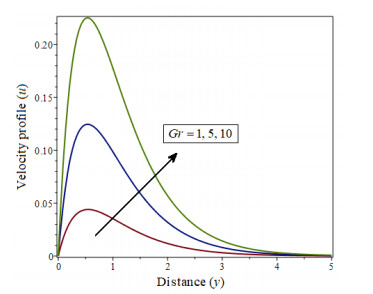









 DownLoad:
DownLoad:
